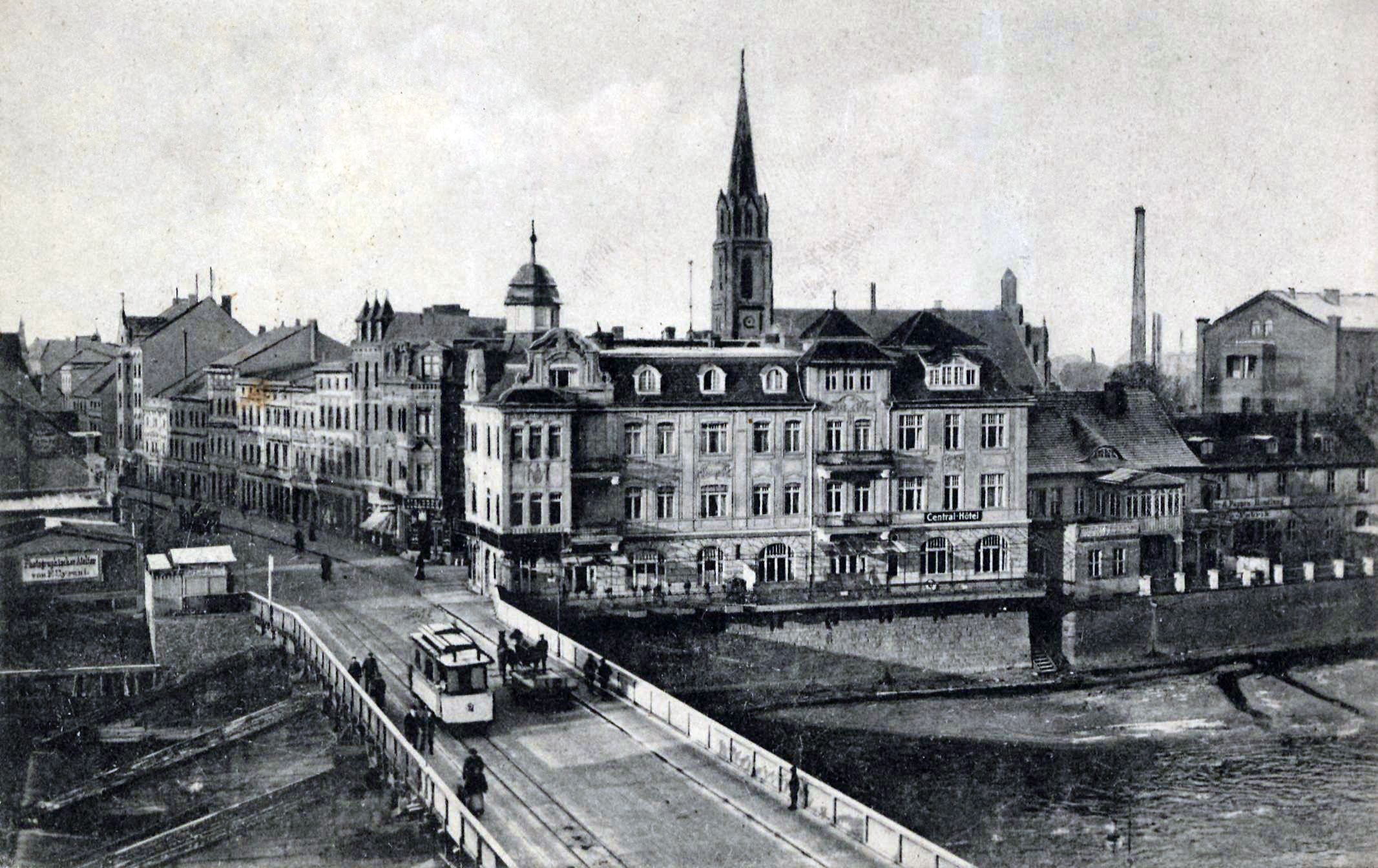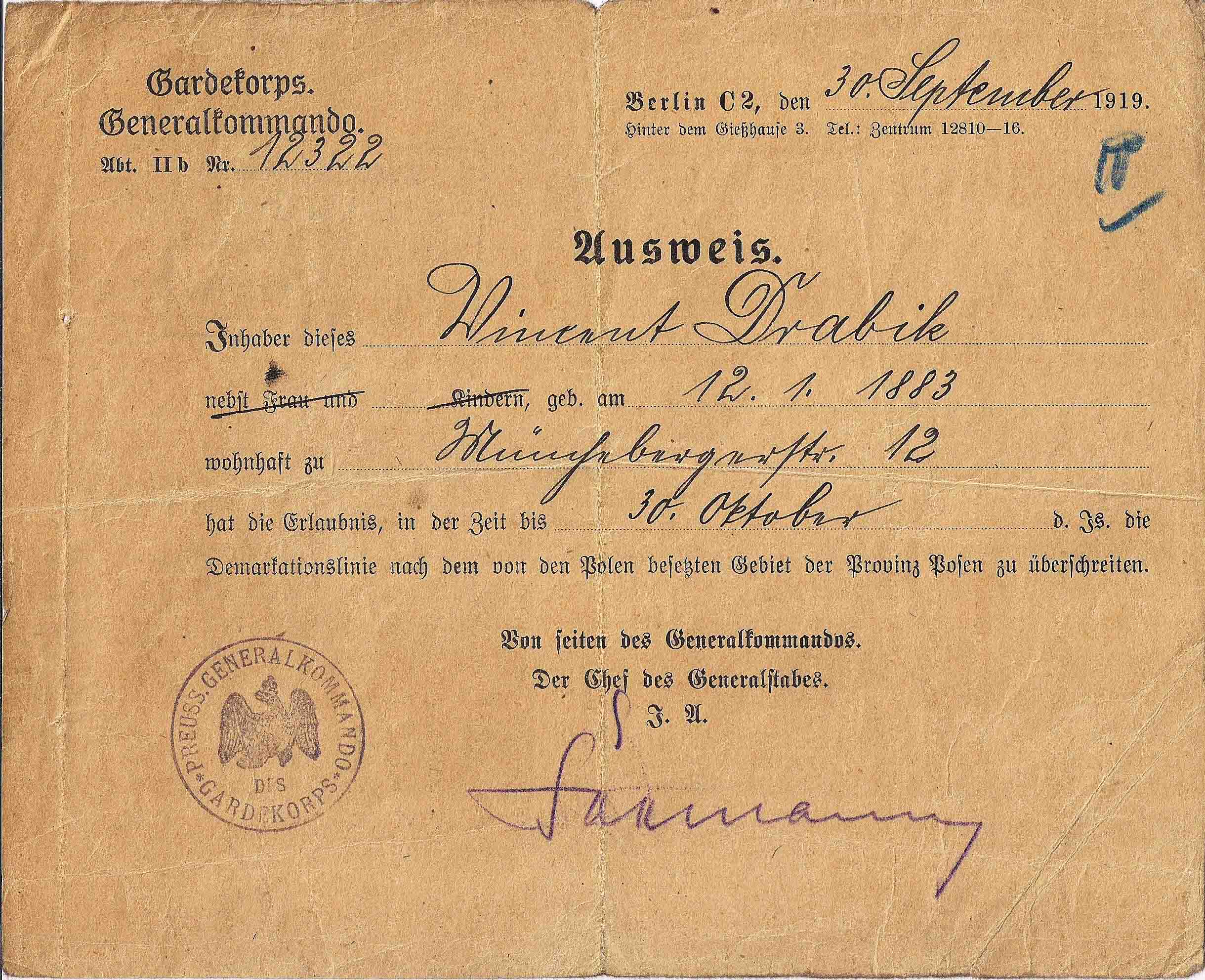|
Guben Station
Guben station is a station of Guben in the German state of Brandenburg. It is at the junction of lines from Berlin Hauptbahnhof, Berlin to Wrocław Główny railway station, Wrocław via Frankfurt (Oder) station, Frankfurt (Oder) and from Cottbus station, Cottbus to Zbąszynek. The station building is surrounded by the tracks. Only the route between Frankfurt (Oder)–Cottbus is used by passenger services, while the line towards Zbąszynek is used for freight traffic. Location and construction The station is located northwest of central Guben and is connected by Straße Bahnhofsberg (“station hill street”) to the road network. It is an "island station" (german: Inselbahnhof) with its entrance building located between the tracks and is bordered to the west by the tracks of the Berlin–Wrocław railway and to the east by the tracks of the Cottbus–Guben railway and the Guben–Zbąszynek railway. At both ends of the station there are Crossover (rail), crossovers between the li ... [...More Info...] [...Related Items...] OR: [Wikipedia] [Google] [Baidu] |
Verkehrsverbund Berlin-Brandenburg
The Verkehrsverbund Berlin-Brandenburg (VBB) is a transport association run by public transport providers in the German states of Berlin and Brandenburg. It is a private limited company owned jointly by the states of Berlin and Brandenburg (with one third each) and the 18 counties and cities of Brandenburg with 1.85% each. It was founded on 30 December 1996. VBB claims to be one of the largest transport associations in Europe based on the area covered of 30,367 km² with nearly 6 million inhabitants. Common ticketing was launched on 1 April 1999. The 2005 number of passengers transported was 1.23 billion, with 3.37 million passengers per day. Lines in the VBB Many lines are operated under the VBB fare structure. This includes all local traffic in Berlin, such as the Berlin S-Bahn and Berlin U-Bahn, as well as all regional train services, most of them RegionalExpress and RegionalBahn lines. There are also several trolleybus and ferry lines within the VBB area. The number o ... [...More Info...] [...Related Items...] OR: [Wikipedia] [Google] [Baidu] |
Zbąszyń
Zbąszyń (german: Bentschen) is a town in western Poland, in Greater Poland Voivodeship, in Nowy Tomyśl County. It is the administrative seat of Gmina Zbąszyń. Geography The town is situated on the Obra river in the Greater Poland historic region, about west of Poznań. Gmina Zbąszyń is part of the Polish-German Pomerania Euroregion. History While the earliest mentions of the settlement date back to 1231, the name ''Sbansin'' first appeared in a 1277 deed, issued by Duke Przemysł I of Greater Poland at his Poznań residence. Its citizens received town privileges before 1311, making Zbąszyń one of the oldest towns in Poland. It was held by the Polish monarchs until in 1393 King Władysław II Jagiełło ceded it to his Masovian governor Jan Głowacz Nałęcz. By the early 15th century, Zbąszyń evolved as a centre of the Greater Polish Hussite movement. Zbąszyń was a private town of Polish nobility, administratively located in the Kościan County in the Poznań ... [...More Info...] [...Related Items...] OR: [Wikipedia] [Google] [Baidu] |
Relay Interlocking
In railway signalling, an interlocking is an arrangement of signal apparatus that prevents conflicting movements through an arrangement of tracks such as junctions or crossings. The signalling appliances and tracks are sometimes collectively referred to as an ''interlocking plant''. An interlocking is designed so that it is impossible to display a signal to proceed unless the route to be used is proven safe. Interlocking is a safety measure designed to prevent signals and points/switches from being changed in an improper sequence. For example interlocking would prevent a signal from being changed to indicate a diverging route, unless the corresponding points/switches had been changed first. In North America, the official railroad definition of interlocking is: "''An arrangement of signals and signal appliances so interconnected that their movements must succeed each other in proper sequence''". Configuration and use A minimal interlocking consists of signals, but usually i ... [...More Info...] [...Related Items...] OR: [Wikipedia] [Google] [Baidu] |
Cottbus–Frankfurt (Oder) Railway
The Cottbus–Frankfurt (Oder) railway is a single-track main line in the German state of Brandenburg, which was originally built and operated by the Cottbus-Großenhain Railway Company (german: Cottbus-Großenhainer Eisenbahn-Gesellschaft, CGE) and directly connects the two cities to each other. It runs from Cottbus via Peitz to Frankfurt (Oder). Only the section between Grunow and Frankfurt and a short section near Cottbus are still in operation. Trains running over the line now use the line to Guben and continue on the line of the former Lower Silesian-Mark Railway (''Niederschlesisch-Märkische Eisenbahn''). History Planning for a rail connection from the area around the town of Müllrose had started by 1840. In 1843, August Leopold Crelle presented a design for a railway from Berlin to Breslau (now Wrocław) that would run near Briesen. This connection—the Lower Silesian-Mark Railway—was, however, built via Frankfurt (Oder). Subsequently plans were studied for a li ... [...More Info...] [...Related Items...] OR: [Wikipedia] [Google] [Baidu] |
Lubsko
Lubsko (german: Sommerfeld, Lower Sorbian language, Lower Sorbian: ''Žemŕ''), formerly Zemsz, is a town in Żary County in the Lubusz Voivodeship in western Poland. It is the administrative seat of the Gmina Lubsko and has a population of 13,921 (2019). History In the early Middle Ages there was a West Slavs, West Slavic or Lechitic gród, stronghold here, followed by a market settlement on the border between Kingdom of Poland (1025-1385), Poland and Lusatia. Probably its oldest name was ''Żemrje''. It is located within Lower Lusatia, but at some times it also belonged to Silesia, e.g. under the Polish rulers Bolesław the Brave and Henry the Bearded. The town was first documented in 1258 and received German town law, town privileges by the March of Lusatia, Lusatian margrave Henry III, Margrave of Meissen, Henry III of Wettin in 1283. The name ''Sommerfeld'', German for "summer field", already appeared in an 1106 deed allegedly issued by margrave Henry I, Margrave of the Saxo ... [...More Info...] [...Related Items...] OR: [Wikipedia] [Google] [Baidu] |
Zielona Góra
Zielona Góra is the largest city in Lubusz Voivodeship, located in western Poland, with 140,403 inhabitants (2021). Zielona Góra has a favourable geographical position, being close to the Polish-German border and on several international road and rail routes connecting Scandinavia with Southern Europe and Warsaw with Berlin. The region is closely associated with vineyards and holds an annual Wine Fest. Zielona Góra is one of the two capital cities of Lubusz Voivodeship, hosting the province's elected assembly, while the seat of the centrally appointed governor is in the city of Gorzów Wielkopolski. History The city's history began when Polish Duke Henry the Bearded brought first settlers to the area in 1222. In 1323 Zielona Góra was granted town privileges. The town was incorporated into the Kingdom of Bohemia in 1506. As part of Bohemia, in 1526 it became part of the Habsburg Empire and experienced a wave of witch trials in the 17th century. As a result of the First Silesi ... [...More Info...] [...Related Items...] OR: [Wikipedia] [Google] [Baidu] |
Lusatian Neisse
The Lusatian Neisse (german: Lausitzer Neiße; pl, Nysa Łużycka; cs, Lužická Nisa; Upper Sorbian: ''Łužiska Nysa''; Lower Sorbian: ''Łužyska Nysa''), or Western Neisse, is a river in northern Central Europe.''Neisse River'' at www.britannica.com. Retrieved 4 Feb 2011. at http://eagri.cz/public. Retrieved 4 Feb 2011. It rises in the , near |
Railway Divisions In Germany
In Germany and Austria, the running of railway services for a railway administration or the regional network of a large railway company was devolved to railway divisions, variously known as ''Eisenbahndirektionen (ED), Bundesbahndirektionen (BD)'' or ''Reichsbahndirektionen (RBD/Rbd)''. Their organisation was determined by the railway company concerned or by the state railway and, in the German-speaking lands at least, they formed the intermediate authorities and regional management organisations within the state railway administration's hierarchy. On the formation of the Deutsche Bahn AG in 1994 the system of railway divisions (''Eisenbahndirektionen'') in Germany was discontinued and their tasks were transferred to new "business areas". Germany State railway divisions Incorporation into the state government The first railway divisions of the various German state railways (known as ''Länderbahnen''), usually reported to a specific government ministry. For example, in Prus ... [...More Info...] [...Related Items...] OR: [Wikipedia] [Google] [Baidu] |
Polish State Railways
(''PKP S.A.''; en, Polish State Railways, Inc.) is the dominant railway operator in Poland. The company was founded when the former state-owned enterprise was divided into several units based on the need for separation between infrastructure management and transport operations. PKP S.A. is the dominant company in PKP Group collective that resulted from the split, and maintains in 100% share control, being fully responsible for the assets of all of the other PKP Group component companies. The group's organisations are dependent upon PKP S.A., but proposals for privatisation have been made. PKP today Pricing system The pricing system currently employed by PKP is highly regressive. On international routes such as, for example, the Berlin-Warsaw Express and the IC-Nightbus Warsaw – Vilnius, a global pricing system is in use which requires one to buy two separate tickets (one in each direction) in place of a single consolidated return ticket. The long-distance and local trains' ... [...More Info...] [...Related Items...] OR: [Wikipedia] [Google] [Baidu] |
Guben Tramway
Guben (Polish and Sorbian: ''Gubin'') is a town on the Lusatian Neisse river in Lower Lusatia, in the state of Brandenburg, Germany. Located in the Spree-Neiße district, Guben has a population of 20,049. Along with Frankfurt (Oder) and Görlitz, Guben is a divided city on the border between Germany and Poland, having been separated into Guben and Gubin in 1945 by the Oder–Neisse line. Geography Environment Guben is located in the district (Landkreis) of Spree-Neiße in the southeast of the state of Brandenburg. It is in the historical region of Lower Lusatia. Guben's position on the banks of the Lusatian Neisse between two plateaus was advantageous in its early economic development. These plateaus developed from ground moraines of the Wisconsin glaciation period. Both the western (''Kaltenborner Berge'' = Kaltenborn Hills) and eastern (''Gubener Berge'' = Guben Hills) ended up as terminal moraines. The surrounding land is covered with pine forests and lakes. ... [...More Info...] [...Related Items...] OR: [Wikipedia] [Google] [Baidu] |
Province Of Posen
The Province of Posen (german: Provinz Posen, pl, Prowincja Poznańska) was a province of the Kingdom of Prussia from 1848 to 1920. Posen was established in 1848 following the Greater Poland Uprising as a successor to the Grand Duchy of Posen, which in turn was annexed by Prussia in 1815 from Napoleon's Duchy of Warsaw. It became part of the German Empire in 1871. After World War I, Posen was briefly part of the Free State of Prussia within Weimar Germany, but was dissolved in 1920 when most of its territory was ceded to the Second Polish Republic by the Treaty of Versailles, and the remaining German territory was later re-organized into Posen-West Prussia in 1922. Posen (present-day Poznań, Poland) was the provincial capital. Geography The land is mostly flat, drained by two major watershed systems; the Noteć (German: ''Netze'') in the north and the Warta (''Warthe'') in the center. Ice Age glaciers left moraine deposits and the land is speckled with hundreds of "finger l ... [...More Info...] [...Related Items...] OR: [Wikipedia] [Google] [Baidu] |







